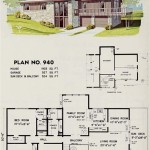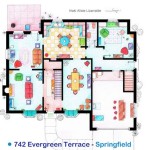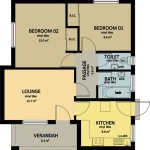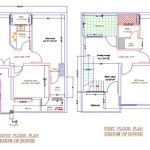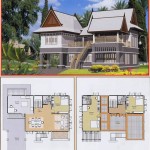Montgomery Ward House Plans: A Legacy of Affordable Housing
Montgomery Ward, a prominent retailer in the United States for over a century, developed and sold house plans from the early 20th century until the 1940s. This initiative catered to a growing demand for affordable and standardized housing, particularly in rural areas and expanding suburban communities. These plans, known as "Wardway Homes," offered a comprehensive solution for prospective homeowners, providing detailed blueprints and material lists, often including pre-cut lumber and other building supplies, delivered directly to the construction site.
The company's foray into the housing market was a strategic move, leveraging its established mail-order catalog system and nationwide distribution network. By offering pre-designed homes, Montgomery Ward aimed to simplify the often-complex process of building a house, reducing the need for specialized architectural expertise and minimizing material waste. This approach made homeownership accessible to a wider range of individuals and families, contributing significantly to the housing boom of the early to mid-20th century.
The popularity of Wardway Homes can be attributed to a number of factors, including their affordability, convenience, and the perceived quality of materials. The standardized plans allowed for economies of scale in material procurement and prefabrication, resulting in lower construction costs. The detailed blueprints provided clear instructions for builders, reducing the likelihood of errors and minimizing the need for extensive on-site modifications. Furthermore, the reputation of Montgomery Ward as a reliable retailer instilled confidence in customers, assuring them of the quality and durability of the materials supplied.
Accessibility and Affordability: The Core of the Wardway Home Concept
The primary appeal of Montgomery Ward house plans lay in their accessibility and affordability. Prior to the widespread adoption of standardized housing plans, building a home often involved hiring an architect, a process that could be expensive and time-consuming. Wardway Homes offered a readily available alternative, providing pre-designed blueprints and comprehensive material lists at a fraction of the cost. This made homeownership a realistic option for families with limited financial resources, particularly those living in rural areas where access to architectural services was often restricted.
The affordability of Wardway Homes was further enhanced by the company's strategic sourcing and distribution practices. Montgomery Ward leveraged its established relationships with lumber mills and other material suppliers to secure favorable pricing. The pre-cut lumber and other standardized components reduced material waste and minimized labor costs, further contributing to the overall affordability of the homes. The mail-order system allowed customers to purchase house plans and materials directly from the company, eliminating the need for intermediaries and reducing markups.
The pricing structure of Wardway Homes was carefully designed to appeal to a broad range of customers. The company offered a variety of floor plans and architectural styles, catering to different budgets and preferences. The availability of financing options further facilitated homeownership, allowing customers to spread the cost of building a home over an extended period. This combination of affordability, accessibility, and financing options made Wardway Homes a popular choice for families seeking to realize the dream of homeownership.
Architectural Styles and Design Features
Montgomery Ward offered a diverse range of architectural styles in its Wardway Homes catalog, reflecting the prevailing architectural trends of the early to mid-20th century. These styles included Bungalows, American Foursquare, Colonial Revival, and Dutch Colonial, among others. The company carefully curated its collection of house plans to appeal to a broad range of tastes and preferences, ensuring that customers could find a design that suited their individual needs and aesthetic sensibilities.
The Bungalow style, characterized by its low-pitched roof, wide eaves, and prominent front porch, was particularly popular among Wardway Homes customers. This style offered a simple and practical design, well-suited to small families and individuals. The American Foursquare style, with its boxy shape and efficient use of space, provided a more substantial and accommodating option for larger families. The Colonial Revival and Dutch Colonial styles, with their classical details and symmetrical facades, appealed to those seeking a more formal and traditional aesthetic.
In addition to the variety of architectural styles, Wardway Homes also offered a range of design features and customization options. Customers could choose from different floor plans, window and door styles, and interior finishes. The company also provided detailed instructions for adding porches, garages, and other amenities. This level of customization allowed customers to personalize their homes and tailor them to their specific needs and preferences, while still benefiting from the affordability and convenience of the standardized plans.
The Impact and Legacy of Montgomery Ward House Plans
The impact of Montgomery Ward house plans on the American housing landscape was significant. During their period of availability, Wardway Homes contributed to the expansion of homeownership, particularly in rural areas and suburban communities. These homes provided affordable and accessible housing options for families seeking to escape overcrowded urban environments and realize the dream of owning their own home. The standardized plans and pre-cut materials simplified the construction process, reducing the need for specialized expertise and minimizing material waste.
The legacy of Wardway Homes continues to resonate today. Many of these homes still stand, serving as a testament to the quality and durability of the materials and construction techniques used. These homes offer a tangible link to the past, providing a glimpse into the architectural styles and living conditions of a bygone era. The historical significance of Wardway Homes has been recognized by preservationists and architectural historians, who have worked to document and preserve these examples of early 20th-century housing.
The principles of affordability, accessibility, and standardized design that underpinned the Wardway Homes concept remain relevant in contemporary housing discussions. As housing affordability continues to be a pressing issue in many communities, the lessons learned from the Montgomery Ward experience can provide valuable insights for developing innovative and sustainable housing solutions. The emphasis on efficient material utilization, simplified construction techniques, and accessible financing options can inform the design and implementation of affordable housing initiatives aimed at meeting the needs of a diverse and growing population.
The availability of comprehensive blueprints and material lists remains a valuable asset for homeowners and historical researchers alike. These documents provide detailed information about the original construction of the homes, including the materials used, the dimensions of the rooms, and the location of structural elements. This information can be invaluable for those seeking to restore or renovate Wardway Homes, ensuring that the historical integrity of the buildings is preserved. Furthermore, the documents provide a valuable resource for architectural historians studying the evolution of housing design and construction techniques in the early 20th century.

25 American Foursquare Kit Homes By Wardway Montgomery Ward Everyday Old House

Montgomery Ward Co Wardway Homes 1924 The Girard Archive Org American Style House Bungalow Plans Vintage

Montgomery Ward Kit Home 1930 Bungalow Hip Roof Euclid Craftsman House Plans Vintage Floor

1930 Piermont Montgomery Ward English Cottage Eclectic Kit House

Montgomery Ward Mail Order House Square Plans Vintage 1920s

1930 English Cottage Kit House Montgomery Ward Home Plans Wardway Plymouth

Do You Live In A Sears Or Montgomery Ward House Are Sure Pickerington

Montgomery Ward Wardway Kenmore Jennifer F Boyer

25 American Foursquare Kit Homes By Wardway Montgomery Ward Everyday Old House

1915 Montgomery Ward Book Of Homes Bungalow Floor Plans Vintage House Small

